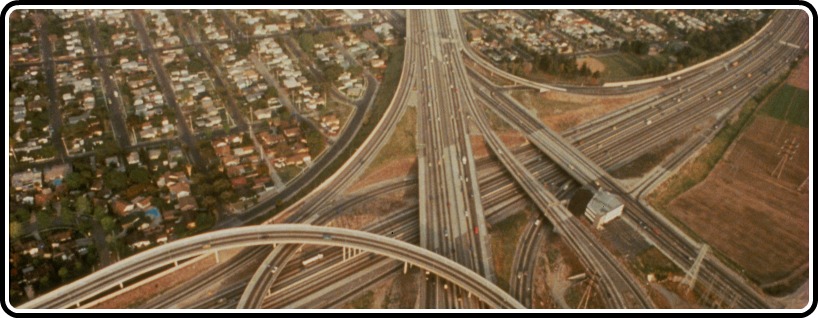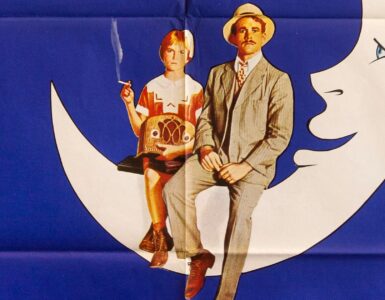‘These films are meant to provoke.’ ‘“ Godfrey Reggio
Within the film world, there are cavalcades of cinematic trilogies that are deemed as truly important and influential pieces of art. Chris Nolan’s Batman trilogy had its conclusion just this past year, and entities like Rossolini’s War Trilogy and Keislowski’s Three Colors Trilogy have become some of the most important entries into the body of cinematic history known as The Criterion Collection. However, there are no collectives, including three films, quite like director Godfrey Reggio’s Qatsi Trilogy.
Experimental documentaries, the films; Koyaanisqatsi, Powaqqatsi and Naqoyqatsi, have become some of the most influential, talked about and thought provoking ‘documentaries’ that the non-fiction cinema world has seen since their release beginning with Koyaanisqatsi in 1983.
That film, the strongest of the trio, was released in ’83, and as is the case with all three of the films here, draws its name from the Hopi language, with Koyaanisqatsi meaning ‘unbalanced life,’ fitting the film’s title directly into its central theme. With the greater trilogy looking directly at the relationship between humans and the world that they inhabit and ultimately the technology that they create, the first feature is rooted directly in thought of humans and our relationship to the earth we walk upon.
Throughout the film, various Hopi sayings are sung by a choir, one of them being ‘if we dig precious things from the land, we will invite disaster.’ With chaos being a direct idea rooted within the very DNA of the film, our palpable relationship with the earth plays as the film’s primary focal point, and the dialogue free experimental film proves to be as impressive visually as it is thematically, if not more so.
Reggio, as a filmmaker, is intriguing. When looking at his style throughout these three films, one is hard pressed to tear apart the first two films, and their stylistic connection with one another. Using all types of creative, experimental and artistic moves, both Koyaanisqatsi and Powaqqatsi use things like editing, shots of different speed, and the like, all to express the themes and the scope at the very core of this film. With luscious shots of nature at both its most serene and also most violent, both films blend shots of natural and man-made entities to truly show the level that humans are involved with our natural world and also the impact and importance of this relationship. The second film particular, looks directly at the beauty of life and how technology and expansion may have corrupted human nature into thinking that more is more, as opposed to the age old saying positing that less, actually, is more.
And while the second film may not be able to live up to the documentary game changing brilliance of its predecessor, 14 years after the 1988 film Powaqqatsi, Naqoyqatsi is an odd cookie to crack, and is arguably one of the weakest trilogy cappers of the last two decades. Taking a look at man’s new relationship with his world, one of isolation, technology and artifice, the film shifts aesthetic entirely, opting for a vibrant blend of CGI images, found footage and even the occasional video game sequence, turning the film into something entirely different. The film lacks anything remotely resembling a thematically relevant center, something that for a film inherently built on the idea of man’s relationship with technology and it’s changing how we relate to our world should not be far from the realm of possibility. It’s poorly paced, and while it may feature the best work from composer Philip Glass during this entire trilogy, there is little to no redeeming factor aesthetically or intellectually. It’s a blunt instrument to the back of the head, and a really uninteresting flight of fancy, capping off a trilogy so viscerally affecting and powerful that it is as sour a note as one could imagine.
Speaking of Philip Glass, he may very well be this trilogy’s greatest star. Giving us three of the greatest scores found within film of this collective time period, Glass’s compositions are epic, beautifully crafted, and are as experimental and timeless as much of this film’s photography. Punctuating each visual note with an aural one perfectly, the films are a masterpiece of the blending of audio and visual.
Now, however mixed the trilogy as a whole is, these Blu-ray releases from The Criterion Collection are some of the best we saw all 2012.
Starting with Koyaanisqatsi, the best film in the series is also the best Blu-ray release of this Sam Smith-designed box set. The packaging, for the release as a whole honestly, is breathtaking and the transfers for these films are equally as visually awe-inspiring. The first disc houses the release’s booklet which is gorgeous, but feels a tad minute, particularly in comparison to other box sets released by Criterion over the past couple of months. The essays, though, are fantastic, and I’m particularly fond of Bill McKibben’s piece, ‘Geological Scale and Human Scale.’
Each of the discs in this set are separately packaged, and the slip cases are your standard Criterion box set style, but the design and artwork make them pop. Features-wise, Koyaanisqatsi contains an interview program with Reggio and Philip Glass, a chat with cinematographer (and Baraka director) Ron Fricke, TV spots, and interviews with Reggio pertaining to the film’s aesthetic and his work on a privacy campaign in New Mexico in 1970. However, the gem of this disc, and the release itself, is the early demo version of the film, with a scratch soundtrack from Allen Ginsburg. It’s a really fascinating watch, and unlike anything you’re bound to see for a while. It’s a real gem of a supplement.
Powaqqatsi and Naqoyqatsi are far less packed. The former features another interview program with Reggio and Glass, a chat with the director about his influences, a public TV interview with Reggio about the series, and a breathtaking montage of footage, of over seventy animals, scored by Glass. Entitled Anima Mundi, the 28-minute short is fantastic, and adds even more intrigue to this release .Finally, the final film in the set includes an afterword from Reggio, a documentary on the making of the film, a panel discussion from 2003 and an interview with Glass and cellist Yo-Yo Ma, which is easily the best thing held on this final disc.
Overall, while the trilogy itself may end in a whimper, this release is as fantastic and awe-inspiring as Criterion has released in years. If you haven’t already, this would be perfect fodder for any of those remaining Christmas gift cards or other forms of money given to you by friends or family. Trust me, you’ll be sorry if you don’t own this.






![Bergman Island (The Criterion Collection) [Blu-ray]](https://criterioncast.com/wp-content/uploads/2022/11/bergman-island-the-criterion-collection-blu-ray-400x496.jpg)
![This Is Not a Burial, It’s a Resurrection (The Criterion Collection) [Blu-ray]](https://criterioncast.com/wp-content/uploads/2022/11/this-is-not-a-burial-its-a-resurrection-the-criterion-collection-blu-ray-400x496.jpg)
![Lars von Trier's Europe Trilogy (The Criterion Collection) [The Element of Crime/Epidemic/Europa] [Blu-ray]](https://criterioncast.com/wp-content/uploads/2022/11/lars-von-triers-europe-trilogy-the-criterion-collection-the-element-of-400x496.jpg)
![Imitation of Life (The Criterion Collection) [Blu-ray]](https://criterioncast.com/wp-content/uploads/2022/11/imitation-of-life-the-criterion-collection-blu-ray-400x496.jpg)
![The Adventures of Baron Munchausen (The Criterion Collection) [4K UHD]](https://criterioncast.com/wp-content/uploads/2022/11/the-adventures-of-baron-munchausen-the-criterion-collection-4k-uhd-400x496.jpg)
![Cooley High [Criterion Collection] [Blu-ray] [1975]](https://criterioncast.com/wp-content/uploads/2022/11/cooley-high-criterion-collection-blu-ray-1975-400x496.jpg)